This submersible sensor & instrument selection guide will help you discover the most appropriate product for installations where the instrumentation will be completely submerged in water or in another type of liquid.
In addition you will find information to help you with the terminology and specification parameters used to define IP68 rated submersible measurement instrumentation.
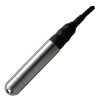 Underwater Pressure Sensors - Pressure sensors for installing underwater which are constructed to prevent water entering sensitive components and causing damage to the sensor.
Underwater Pressure Sensors - Pressure sensors for installing underwater which are constructed to prevent water entering sensitive components and causing damage to the sensor.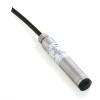 Submersible Liquid Level Sensors - Devices protected from liquid ingress when completely immersed in a fluid for measuring liquid level and converting it to an electrical signal to send to other instrumentation.
Submersible Liquid Level Sensors - Devices protected from liquid ingress when completely immersed in a fluid for measuring liquid level and converting it to an electrical signal to send to other instrumentation.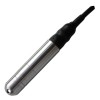 IP68 Submersible Protected Voltage Output Signal Pressure Transducers - Voltage signal out pressure transducers protected to IP 68 ingress protection rating for immersing in water or other compatible liquids.
IP68 Submersible Protected Voltage Output Signal Pressure Transducers - Voltage signal out pressure transducers protected to IP 68 ingress protection rating for immersing in water or other compatible liquids. Detachable Cable Submersible Liquid Level Sensor Probes - Sensor probes with removable submersible signal cable for measuring liquid level. These sensor probes can be easily replaced without the need to remove the installed cable assembly or break connections to cable junction boxes and termination enclosures.
Detachable Cable Submersible Liquid Level Sensor Probes - Sensor probes with removable submersible signal cable for measuring liquid level. These sensor probes can be easily replaced without the need to remove the installed cable assembly or break connections to cable junction boxes and termination enclosures.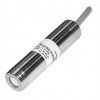 Landfill Site Submersible Leachate Level Transmitters - Sensing transmitter devices protected from liquid ingress when completely immersed in a leachate for measuring leachate level and converting it to a 4-20mA current output signal to send to other instrumentation on a landfill site used to bury waste material.
Landfill Site Submersible Leachate Level Transmitters - Sensing transmitter devices protected from liquid ingress when completely immersed in a leachate for measuring leachate level and converting it to a 4-20mA current output signal to send to other instrumentation on a landfill site used to bury waste material.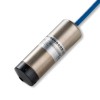 Sea, Brackish or Salt Water Submersible IP68 Depth & Level Sensors - IP68 rated transmitters and transducers suitable for use with tidal and coastal salt water.
Sea, Brackish or Salt Water Submersible IP68 Depth & Level Sensors - IP68 rated transmitters and transducers suitable for use with tidal and coastal salt water.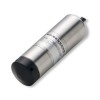 Submersible Hydrostatic Level Sensors & Probes - Level sensors for submerging permanently in liquid to determine the level or depth of fluid by measuring the hydrostatic pressure.
Submersible Hydrostatic Level Sensors & Probes - Level sensors for submerging permanently in liquid to determine the level or depth of fluid by measuring the hydrostatic pressure. Submersible Diesel Tank Level Sensors - Diesel fuel oil storage tank device for measuring liquid level and converting it to an electrical signal to send to other instrumentation protected from diesel ingress when completely immersed in the fuel oil.
Submersible Diesel Tank Level Sensors - Diesel fuel oil storage tank device for measuring liquid level and converting it to an electrical signal to send to other instrumentation protected from diesel ingress when completely immersed in the fuel oil. Waterproof Absolute Pressure Sensors - Waterproof absolute pressure sensors with absolute reference ranges for monitoring underwater pipe pressures or water depth/level in applications where it is not possible or less practical to provide a vented reference for atmospheric pressure compensation.
Waterproof Absolute Pressure Sensors - Waterproof absolute pressure sensors with absolute reference ranges for monitoring underwater pipe pressures or water depth/level in applications where it is not possible or less practical to provide a vented reference for atmospheric pressure compensation.
Submersible Device Design Considerations
A submersible device can be installed in liquid without causing any damage as long as the installation instructions are adhered to, and the specified depth and time duration limits for submersion are not exceeded.
Assembled devices are vulnerable to liquid ingress, which can enter the device through seals and joints or permeate through components that incorporate thin membranes or porous materials.
To achieve a long lasting submersible construction, the device is constructed from materials which will not easily corrode when exposed to a fluid. Corrosion may cause the material to fail and allow liquid to enter the device, or interfere with the seal joining the corroded material to another component.
The seals used to join device components together are pressure leak tight, resilient to the expected temperature variations and resist corrosion from the surrounding fluid.
All components and seals are designed to withstand the pressure expected at the maximum required liquid depth, and this may involve a series of seals and backfilling with a potting compound or other fill material to improve longevity and reliability at greater depths.
Related Help Guides
- Choosing PVC, PUR, FEP and TPE cable types
- How to reduce submersible pressure sensor failures caused by moisture ingress
- Using absolute pressure sensors to measure hydrostatic level
- Using a screw-in or waterproof pressure transmitter to measure liquid level
- Improve the electrical termination of vented submersible pressure sensors
- Considerations for monitoring Landfill Water Level
- Why are Submersible applications so demanding of Pressure Transducers?
- Determining the Signal Cable Length of a Suspended Liquid Level Transducer
- Are all IP68 Water Resistant Protection Ratings the same
- Problem with zero drift when installing submersible pressure sensor
